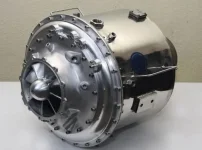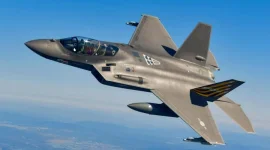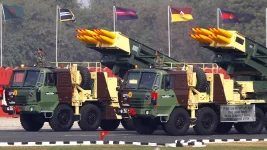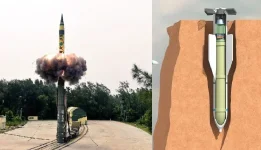The Indian Ministry of Defence has officially sanctioned a major initiative to enhance the nation's underwater combat strength by approving the development of 100-tonne Extra-Large Unmanned Underwater Vehicles (XLUUVs).
With a budget of approximately ₹2,500 crore (around $290 million), this programme signals a decisive move towards integrating advanced autonomous technology into the Indian Navy's operational framework, focusing on missions that require long-term stealth presence with minimal risk to human life.
Leading the charge on this project is the Defence Research and Development Organisation (DRDO), which will design and build these large, unmanned platforms.
The 100-tonne XLUUVs are envisioned as multi-purpose assets capable of performing a variety of critical tasks. These include extended deep-sea surveillance, covert intelligence gathering, strategic mine placement, and anti-submarine warfare (ASW).
The introduction of these vehicles is expected to provide the Indian Navy with greater operational range and persistence in monitoring its extensive maritime zones, especially within the strategically vital Indo-Pacific region.
However, this 100-tonne vehicle is just the first step in a much larger strategic vision for unmanned naval warfare. Official sources indicate that the Indian Navy's future plans involve a subsequent phase dedicated to creating a significantly larger and more powerful 500-tonne armed autonomous submarine. This larger platform represents a shift from surveillance to direct combat capability.
The planned 500-tonne unmanned submarine is set to become a cornerstone of India's underwater deterrence policy. While the 100-tonne model is primarily built for intelligence, surveillance, and reconnaissance (ISR) missions, the 500-tonne variant will be engineered for offensive "hunter-killer" roles.
Preliminary designs show it will be armed with both lightweight torpedoes, for targeting enemy submarines, and heavyweight torpedoes, capable of neutralising large surface warships.
This formidable 500-tonne autonomous submarine is being designed for maximum operational flexibility. It will be able to function as part of a joint mission with manned submarines or operate independently as a standalone hunter-killer.
Key design features are expected to include exceptional endurance for long-duration patrols, a minimal acoustic signature to ensure stealth, and sophisticated artificial intelligence systems for navigation and target acquisition.
Such capabilities will allow the submarine to penetrate heavily contested waters and high-risk zones near an adversary's coast without endangering naval personnel.
Complementing these larger platforms, the Indian Navy is also advancing a project for a smaller, 20-tonne unmanned underwater vehicle.
This compact UUV is specifically designed for operations in shallower coastal waters. Its primary missions will involve monitoring strategic maritime choke points, surveying enemy ports, and protecting friendly naval bases, filling a crucial niche in coastal security.
Together, these three classes of unmanned vehicles—the 20-tonne, 100-tonne, and 500-tonne—will establish a comprehensive, multi-layered autonomous naval force for India.
Each vehicle class will be tailored for specific operational needs, creating a versatile underwater ecosystem. This force will be capable of adapting to a wide range of scenarios, from routine peacetime monitoring to high-stakes combat situations.
As India continues to strengthen its naval footprint in the Indian Ocean and project its influence across the Indo-Pacific, these autonomous systems offer a cost-effective and high-impact method of force projection.
They serve as crucial "force multipliers," enhancing the reach and effectiveness of the existing fleet. Furthermore, they can help address any temporary gaps in the conventional manned submarine fleet as it undergoes modernization and expansion.
This significant investment in XLUUV technology places India among a select group of global naval powers actively developing such capabilities.
Nations like the United States, with its "Orca" XLUUV programme, along with China and the United Kingdom, are also making rapid advancements in unmanned underwater warfare. India's commitment ensures it remains at the forefront of this critical evolution in modern naval strategy.







